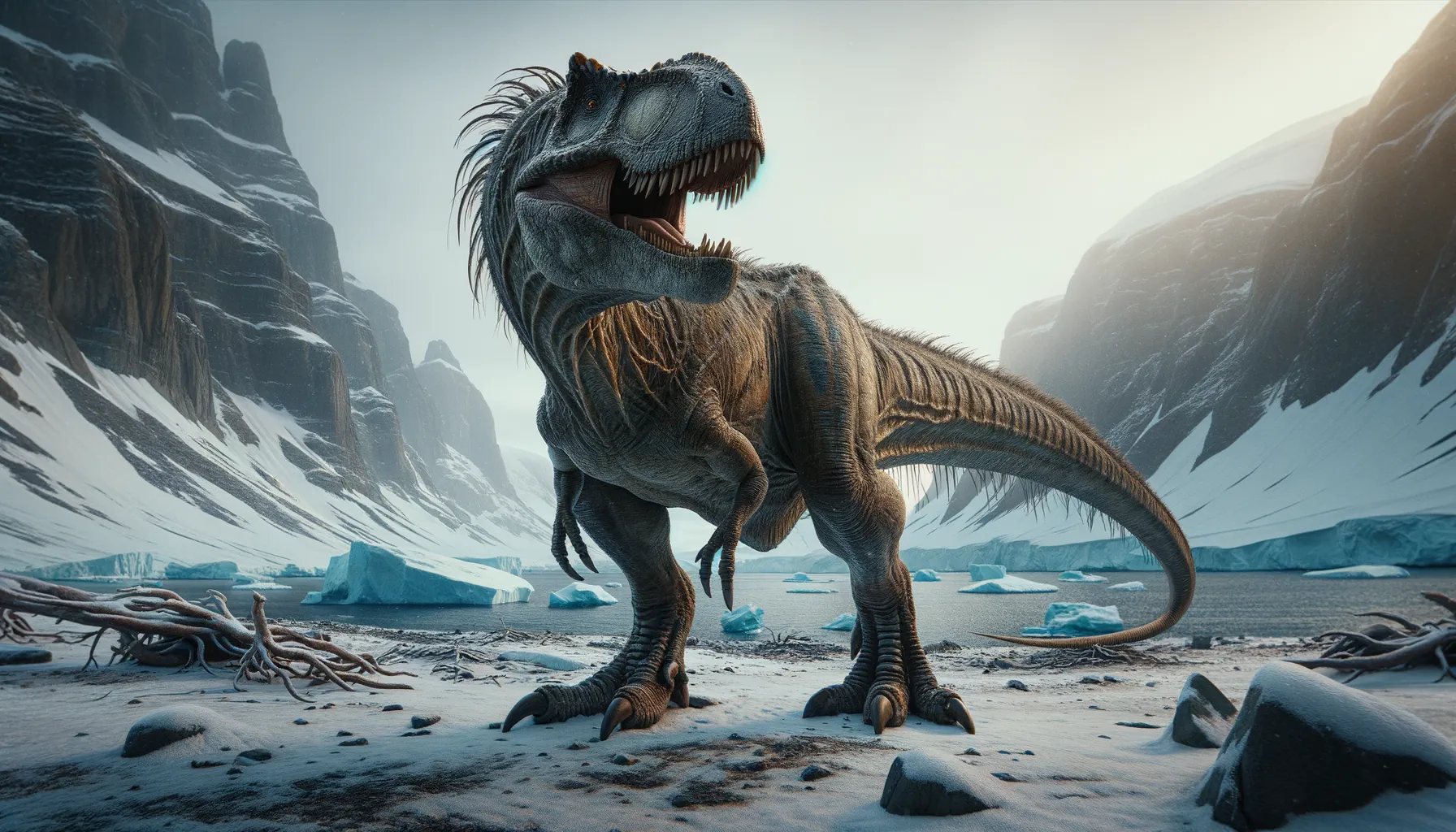
Imperobator
A giant of icy prehistoric landscapes.
Period
Cretaceous
Length
Estimated 16 feet long.
Height
Around 8 to 9 feet tall.
Weight
Approximately 1,000 pounds.
Imperobator was a large, carnivorous dinosaur that inhabited the cold, challenging environment of Antarctica during the late Cretaceous period. Its robust build and sharp claws suggest it was an adept predator. Although much of its biology remains speculative, discoveries hint at a warm-blooded creature capable of surviving frigid temperatures. This giant raptor-like dinosaur adds to the complexity of the ecosystems that existed during its time.
Diet
Imperobator was a carnivore, feeding primarily on smaller dinosaurs and possibly carrion. Its diet likely consisted of any prey it could overpower using its strength and speed.
Hunting
It might have hunted solo or in small groups, using its keen senses and agility to ambush prey. Imperobator's sharp claws were perfect for gripping and subduing its meals.
Environmental challenges
The cold climate of ancient Antarctica posed a significant challenge, suggesting that Imperobator was endothermic to maintain its body temperature. It had to adapt to long periods of darkness and possibly limited food resources during certain seasons. The rugged terrain also meant that Imperobator had to navigate icy and uneven landscapes.
Speed
Likely a fast runner, estimated at 25-30 mph.
Lifespan
Estimated at around 20-30 years.
First discovery
Discovered in 2007 in Antarctica.
Fun Facts
- Imperobator is a theropod dinosaur that lived during the Late Cretaceous period, which was about 70 million years ago.
- The name 'Imperobator' means 'mighty warrior,' reflecting its presumed fierce nature.
- Fossils of Imperobator have been found in Antarctica, showing that dinosaurs once lived on this now-frozen continent.
- Although its exact size is uncertain, it is estimated that Imperobator was a large bird-like creature, possibly over 2 meters tall.
- Imperobator is believed to have been part of the raptor family, similar to the Velociraptor but much larger.
- The discovery of Imperobator highlights how diverse and widespread dinosaurs were, with some even adapting to cold environments.
- Very few bones of Imperobator have been found, making it a bit of a mystery and leaving much to be discovered about this creature.
Growth and Development
Young Imperobators likely grew rapidly to reach a size capable of surviving the harsh environment. Their development may have included a juvenile phase where they remained close to groups for protection. Growth spurts would have been essential to achieve optimal size for hunting and self-defense.
Habitat
Imperobator roamed the forested regions of ancient Antarctica, a land connected to other continents during its era. These forests provided cover from predators and harsh weather, along with potential nesting sites. The presence of rivers and lakes suggests abundant freshwater resources were available.
Interaction with other species
Imperobator may have competed with other carnivores for food, living in a complex ecosystem that also included herbivorous dinosaurs. Its presence could have affected the behaviors and adaptations of smaller creatures. It is possible that scavenging played a role in both its diet and interactions with other species.
Natural lifespan
Imperobator likely had a natural lifespan of about 25 years.
Reproduction
Imperobator is believed to have laid eggs, which might have been kept warm using body heat or nesting materials. Parental care, if present, would have included protecting the eggs and young from predators. Nesting sites would have been strategically chosen to maximize safety and warmth.
Social behaviour
Imperobator's social behavior could have included forming small groups of related individuals or living solitarily. These groups may have provided increased hunting efficiency and protection. Vocalizations or visual displays might have been used to communicate with one another.
Fossil locations
The main fossil of Imperobator was found in the James Ross Island region of Antarctica. It is one of the few significant dinosaur fossils uncovered on this icy continent. The find contributes to our understanding of prehistoric life in polar regions.
